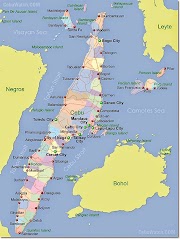Mawar is now a Super Typhoon and once it enters PAR this Friday, May 26, 2023 it will be called Betty.
All agencies are now monitoring the Super Typhoon Mawar on what would be it's a accurate path and possible impact in the Philippines. Guam will be the first place to be hit by Mawar.
#SuperTyphoonMawar #SuperTyphoonBetty #TyphoonPhilippines
Super typhoons are among the most formidable and destructive natural phenomena on Earth. These intense tropical cyclones can unleash catastrophic winds, torrential rains, and massive storm surges, leaving a trail of devastation in their wake. In this article, we delve into the world of super typhoons, exploring their formation, characteristics, and the profound impacts they have on both human lives and the environment.
Understanding Super Typhoons:
Super typhoons, also known as intense tropical cyclones or hurricanes, originate over warm ocean waters near the equator. These colossal weather systems gain strength from the energy stored in the warm ocean surface and the Earth's rotation. When atmospheric conditions align, a tropical depression forms, marked by a low-pressure center and organized thunderstorms. As the system intensifies, it may develop into a tropical storm and eventually evolve into a full-fledged super typhoon.
Characteristics and Intensity:
Super typhoons are distinguished by their immense size and extraordinary strength. These massive storms can extend over hundreds of kilometers, with spiral bands of clouds radiating from their center. The most defining characteristic of a super typhoon is its sustained wind speeds, which must exceed 150 miles per hour (240 kilometers per hour) to attain the super typhoon status. Some of the most powerful super typhoons have recorded wind speeds exceeding 180 miles per hour (290 kilometers per hour), capable of causing widespread destruction.
Impacts and Destruction:
Super typhoons leave a path of devastation in their wake, impacting coastal regions and islands with their brute force. The primary dangers associated with these storms include powerful winds that can uproot trees, demolish buildings, and turn debris into deadly projectiles. Additionally, the intense rainfall they bring can trigger catastrophic flooding and landslides, causing further destruction and loss of life. Storm surges, which are abnormal rises in sea level, pose a significant threat as well, flooding coastal areas and eroding shorelines.










0 Comments